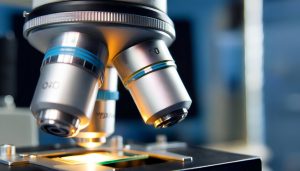Scientists at UC Merced have developed artificial cells that can measure time perfectly – similar to the 24-hour biological clock in living organisms. By reconstructing the circadian mechanism in tiny vesicles, the researchers were able to show that even simplified synthetic systems can glow in a daily rhythm – provided they have enough proteins.
A team of researchers at UC Merced has found that tiny artificial cells can measure time accurately, mimicking the daily rhythm of living organisms. Their findings shed light on how biological clocks keep time despite molecular interference signals within cells. The study, recently published in Nature Communications, was led by Anand Bala Subramaniam, professor of bioengineering, and Andy LiWang, professor of chemistry and biochemistry. The first author, Alexander Zhang Tu Li, earned his PhD in Subramaniam’s lab.
Research Deepens Our Understanding of Biological Time Measurement in All Life Forms
Biological clocks – also known as circadian rhythms – control 24-hour cycles that regulate sleep, metabolism and other vital processes. To explore the mechanisms behind the circadian rhythms of cyanobacteria, the researchers reconstructed the clockwork in simplified, cell-like structures called vesicles. These vesicles were loaded with core clock proteins, one of which was labeled with a fluorescent marker. The artificial cells glowed in a regular 24-hour rhythm for at least four days. However, when the number of clock proteins was reduced or the vesicles were shrunk, the rhythmic glow stopped. The loss of rhythm followed a reproducible pattern. To explain these results, the team developed a computer model. The model showed that the higher the concentration of clock proteins, the more robust the clocks become, enabling thousands of vesicles to measure time reliably – even if the protein levels vary slightly between vesicles.

The circadian clock of cyanobacteria is based on slow biochemical reactions that are inherently noisy, and it has been hypothesized that a large number of clock proteins are required to buffer this noise. This new study introduces a method for observing reconstituted clock reactions in vesicles of adjustable size that mimic the dimensions of cells. This powerful tool makes it possible to directly test how and why organisms with different cell sizes employ different timing strategies, deepening our understanding of biological timing mechanisms in all life forms.







